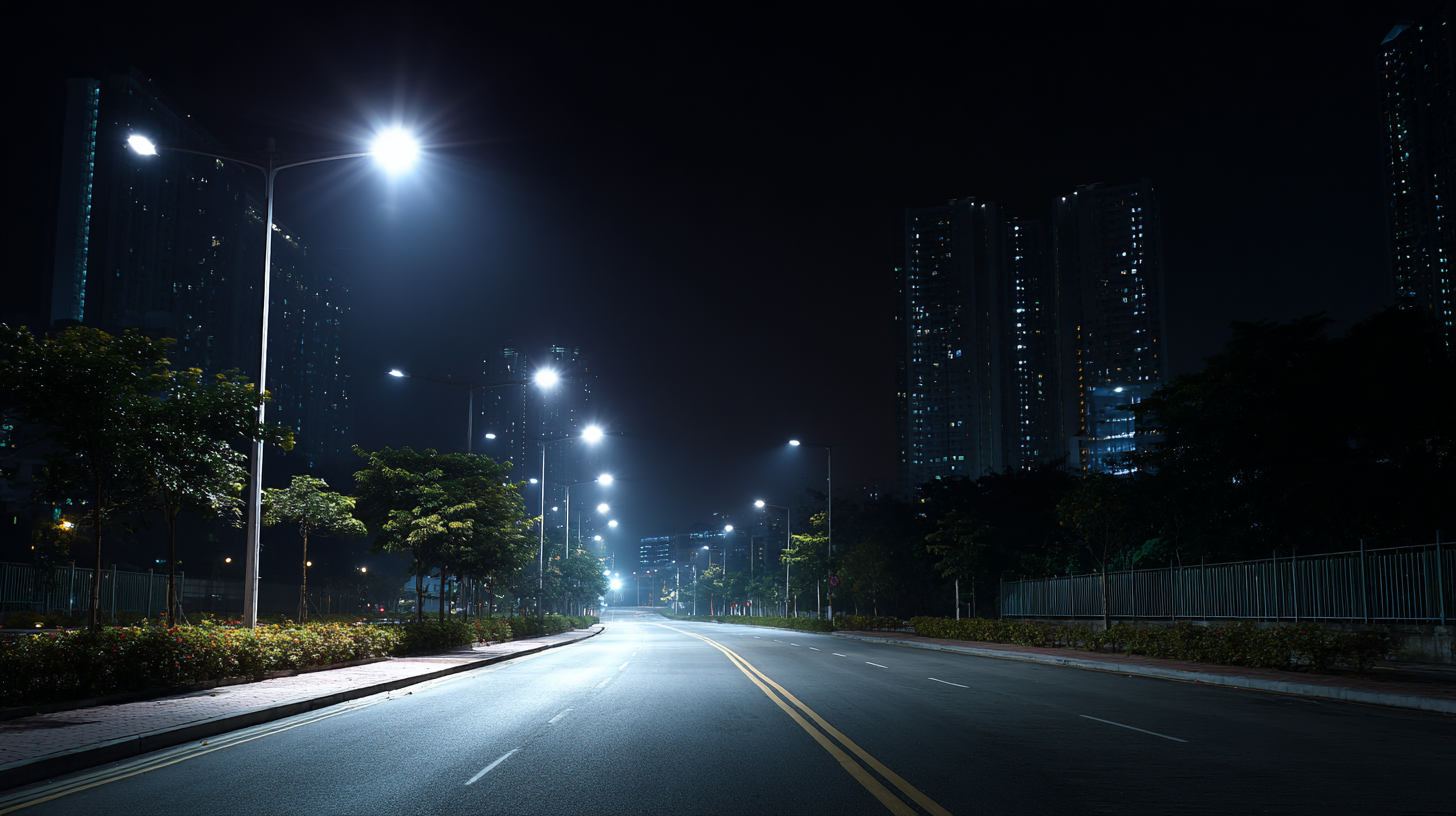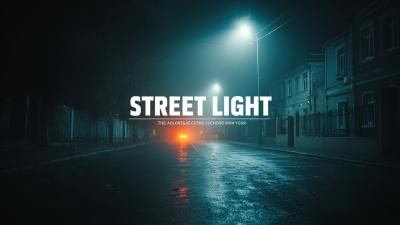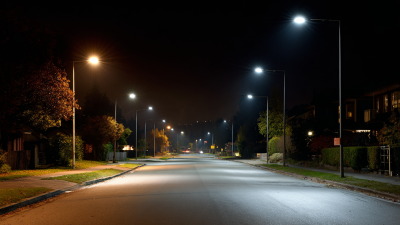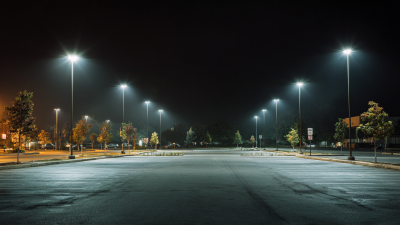How to Enhance Urban Safety with Smart Street Light Solutions
In an era where urbanization is accelerating and cities are becoming increasingly dense, ensuring the safety of residents has become a paramount concern for city planners and policymakers. One innovative approach to enhancing urban safety is through the implementation of smart street light solutions. These advanced lighting systems not only illuminate public spaces but also integrate various technologies that can monitor and respond to safety threats. From real-time surveillance capabilities to environmental sensors that detect anomalies, smart street lights can transform urban landscapes into safer environments. This article will explore practical strategies on how to effectively leverage smart street light technology to improve safety in urban areas, highlighting the benefits of increased visibility, enhanced communication, and proactive crime prevention measures. By harnessing these smart solutions, cities can significantly enhance the quality of life for their residents while fostering a sense of security in public spaces.

Identifying Key Features of Smart Street Light Solutions for Urban Safety
Smart street light solutions play a crucial role in enhancing urban safety by integrating advanced technologies that address various safety concerns. One of the key features of these systems is the incorporation of motion sensors, which can detect the presence of pedestrians and vehicles. By adjusting the lighting intensity based on real-time activity, these smart lights not only improve visibility but also deter potential criminal activities in poorly lit areas. The adaptive lighting feature ensures that illuminated zones are strategically targeted, making them safer for community members during nighttime.
Another vital aspect of smart street lights is their connectivity to municipal networks. Equipped with Internet of Things (IoT) capabilities, these street lights can communicate with other urban infrastructure, such as CCTV cameras and emergency response systems. This interconnectivity allows for immediate reporting of incidents, enhancing the ability of law enforcement to respond swiftly. Additionally, data collected from smart street lights can be used for urban planning, helping cities identify areas that require further safety measures, thus fostering an overall sense of security in urban environments.
Impact of Smart Street Light Solutions on Urban Safety
This chart illustrates the perceived impact levels of various benefits provided by smart street light solutions in urban settings, highlighting their role in enhancing overall urban safety.
Integrating IoT Technology for Real-Time Surveillance and Monitoring
The integration of IoT technology into smart street lighting solutions
is transforming urban safety by enabling real-time surveillance and monitoring. As cities adopt these innovative systems, the market for IoT-driven smart lighting is expected to experience significant growth.
This surge is part of a broader trend,
with the global artificial intelligence market projected to expand from $35.65 billion in 2023 to an astounding $253.86 billion by 2030, reflecting a compound annual growth rate (CAGR) of 32.4%. This growth is largely driven by the increasing need for enhanced security measures in urban environments.
In addition to smart street lighting,
the demand for advanced surveillance systems, including wireless home security cameras, is on the rise.
The global market for wireless security cameras is anticipated to grow from $9.8 billion in 2024 to $37.5 billion by 2034, demonstrating a CAGR of 13.6%.
The growing prevalence of IoT, artificial intelligence, and machine learning technologies
is propelling this market forward. As city planners and governments invest in smarter infrastructure, robust surveillance systems will play a critical role in enhancing public safety and instilling greater confidence among urban populations.
Designing Adaptive Lighting to Enhance Visibility in High-Crime Areas
Adaptive lighting solutions in urban environments have emerged as a pivotal strategy to enhance visibility, particularly in high-crime areas. According to a recent report by the International Dark-Sky Association, approximately 20% of urban crime occurs in poorly lit areas. By implementing smart street light technology that adjusts brightness based on real-time conditions, cities can significantly improve safety and deter criminal activity. For instance, a pilot project conducted in Los Angeles revealed a 10% reduction in crime rates in neighborhoods where adaptive lighting was deployed.
The functionality of adaptive street lights can be further enhanced by integrating smart sensors that monitor pedestrian foot traffic and vehicle movement. A study from the Institute of Transportation Engineers indicated that dynamic lighting, which adapts in response to both ambient light and activity levels, can increase visibility up to 40% during night hours. These data-driven approaches not only contribute to a safer urban environment but also optimize energy consumption, offering a dual benefit of sustainability and security. By prioritizing investment in adaptive lighting solutions, city planners can effectively foster safer communities while leveraging technological advancements in urban infrastructure.
How to Enhance Urban Safety with Smart Street Light Solutions
| Feature | Description | Benefit | Application Area |
|---|---|---|---|
| Adaptive Brightness | Automatically adjusts light intensity based on environmental conditions. | Increased visibility and energy efficiency. | High-crime neighborhoods, parks. |
| Motion Detection | Lights activate when motion is detected in the vicinity. | Deters potential criminal activities by enhancing visibility. | Streets, alleyways. |
| Emergency Alerts | Ability to send alerts to emergency services with one click. | Rapid response to incidents enhances safety. | Busy intersections, transit stations. |
| Surveillance Integration | Integrated cameras for real-time monitoring. | Provides law enforcement with vital information and deterrence. | Downtown areas, hotspots. |
| Data Analytics | Collects and analyzes data on foot traffic and incidents. | Informs city planning and resource allocation. | Civic planning, resource management. |
Implementing Data Analytics to Predict and Prevent Urban Crime Patterns
 Urban safety is increasingly becoming a critical concern in metropolitan areas, and smart street light solutions play a pivotal role in this context. By incorporating data analytics into street lighting systems, cities can predict and prevent crime patterns more effectively. A report by the National Institute of Justice states that cities using smart technology can reduce crime rates by up to 25% through better lighting and enhanced surveillance capabilities. The integration of sensors in smart street lights allows for real-time data collection on foot traffic and environmental conditions, enabling law enforcement agencies to identify potential hotspots for criminal activity.
Urban safety is increasingly becoming a critical concern in metropolitan areas, and smart street light solutions play a pivotal role in this context. By incorporating data analytics into street lighting systems, cities can predict and prevent crime patterns more effectively. A report by the National Institute of Justice states that cities using smart technology can reduce crime rates by up to 25% through better lighting and enhanced surveillance capabilities. The integration of sensors in smart street lights allows for real-time data collection on foot traffic and environmental conditions, enabling law enforcement agencies to identify potential hotspots for criminal activity.
Moreover, the deployment of predictive analytics tools can assist city planners and police departments in making informed decisions on resource allocation. For instance, the International City/County Management Association (ICMA) reports that cities leveraging data-driven approaches see a significant reduction in response times to incidents, improving overall public safety. With smart street lights collecting and analyzing data on local crime trends, urban authorities can not only implement timely interventions but also foster community engagement by providing real-time crime updates and safety information to residents, thereby enhancing the overall sense of security in urban environments.
Engaging Community Feedback in the Development of Smart Lighting Projects
Engaging community feedback is paramount in the development of smart street lighting projects. Studies indicate that urban areas implementing community-driven approaches see a significant uptick in resident satisfaction and perceived safety, with reports showing up to a 30% decrease in lighting-related crime rates (International Association of Lighting Designers, 2021). By actively involving citizens in the planning phase, municipalities can ensure that the new lighting solutions address the specific needs and concerns of the community, such as preferred locations for light installations and desired features like motion sensors or energy efficiency.

To integrate community input effectively, municipalities can utilize surveys and public forums. This not only helps gauge resident opinions but also fosters a sense of ownership among citizens, encouraging them to act as stewards of their urban environment. Additionally, leveraging social media platforms can facilitate broader outreach, allowing for real-time feedback and suggestions.
Tips: Consider working with local organizations to spread awareness about the project and its benefits. Host interactive workshops that invite residents to share their insights and preferences, making the process inclusive and transparent. Lastly, updating the community on the project's progress can bolster support and engagement throughout the implementation phase.
Related Posts
-

Discover the Best Street Light Solutions Directly from Top Chinese Manufacturers
-

Ultimate Solutions for Enhancing Outdoor Spaces with the Best Solar Lights
-

Innovative Applications of Best Street Light and a Guide to Choosing Yours
-

What are the Benefits of Using Solar Powered Lights for Your Home
-

How to Choose the Best LED Street Lights for Your Urban Lighting Needs
-

Essential Guide to Choosing the Right Parking Lot Lights for Your Business Needs
